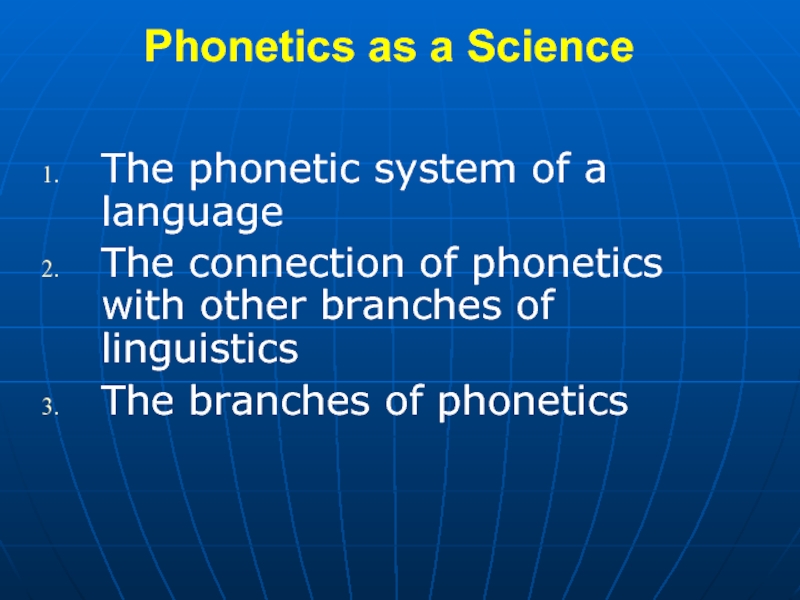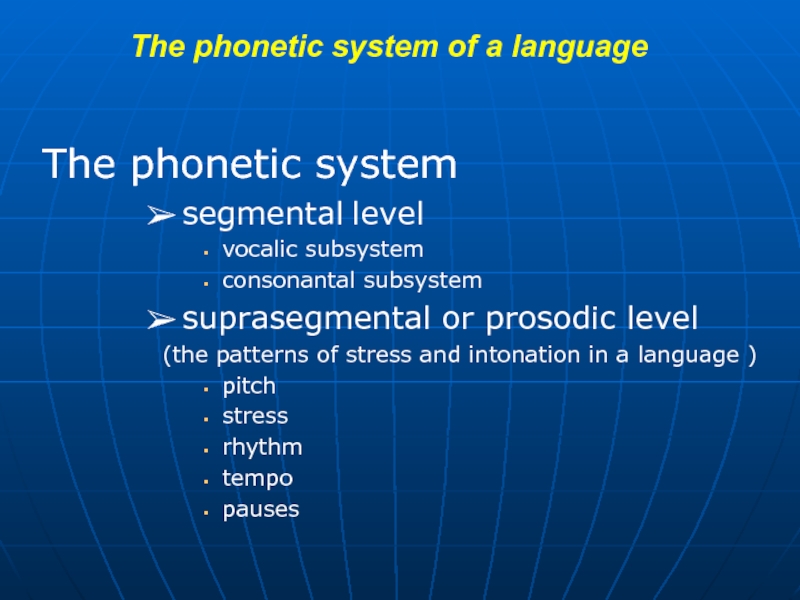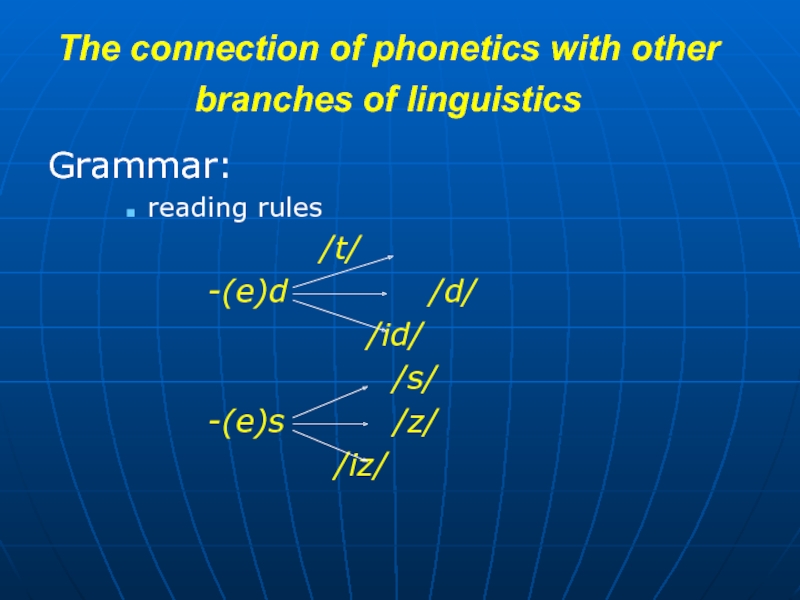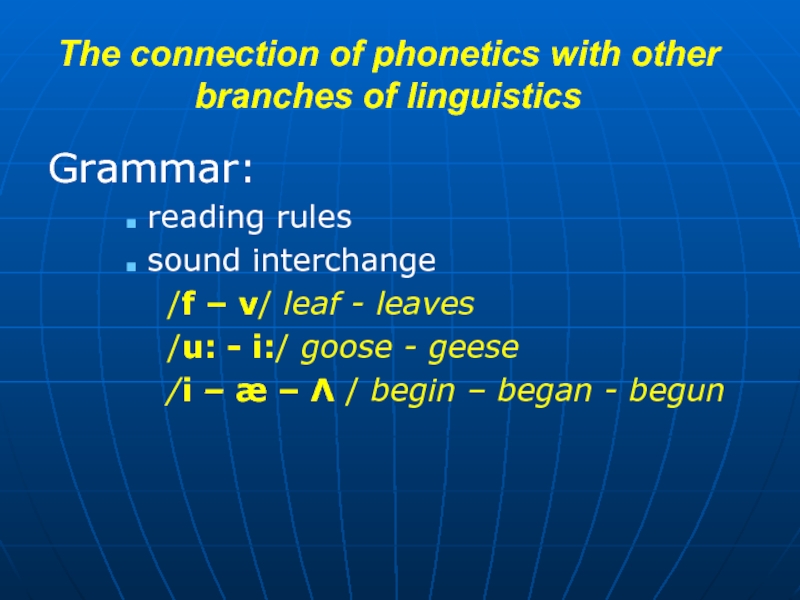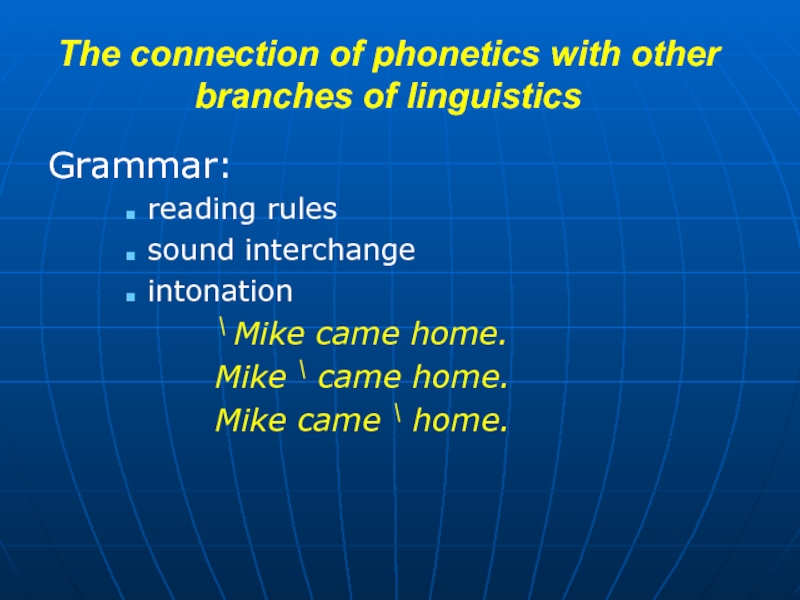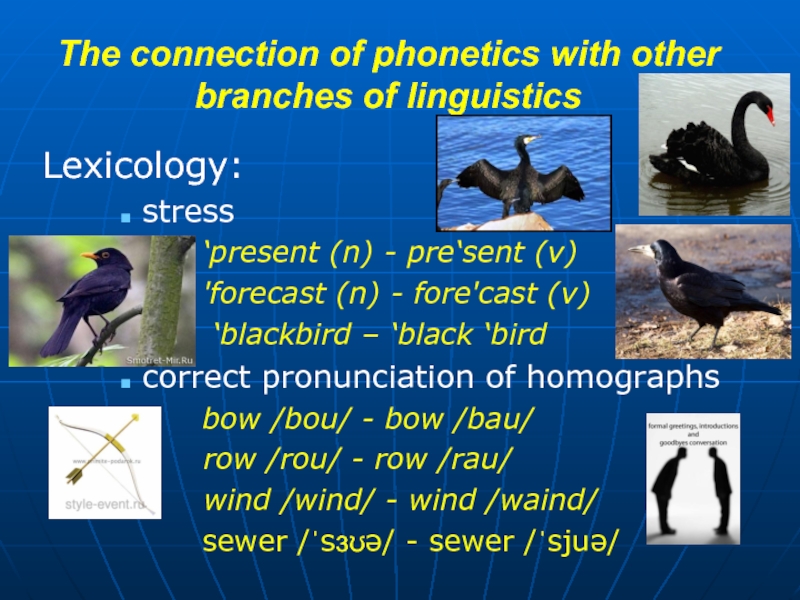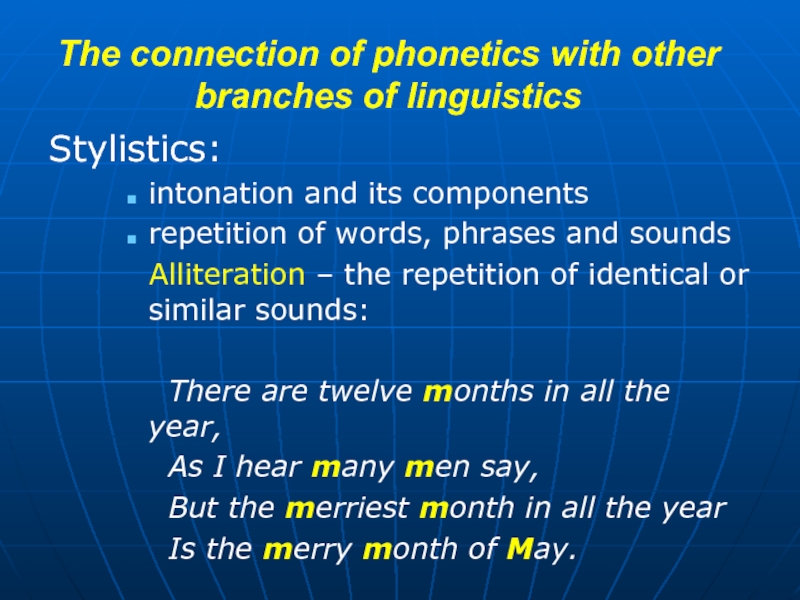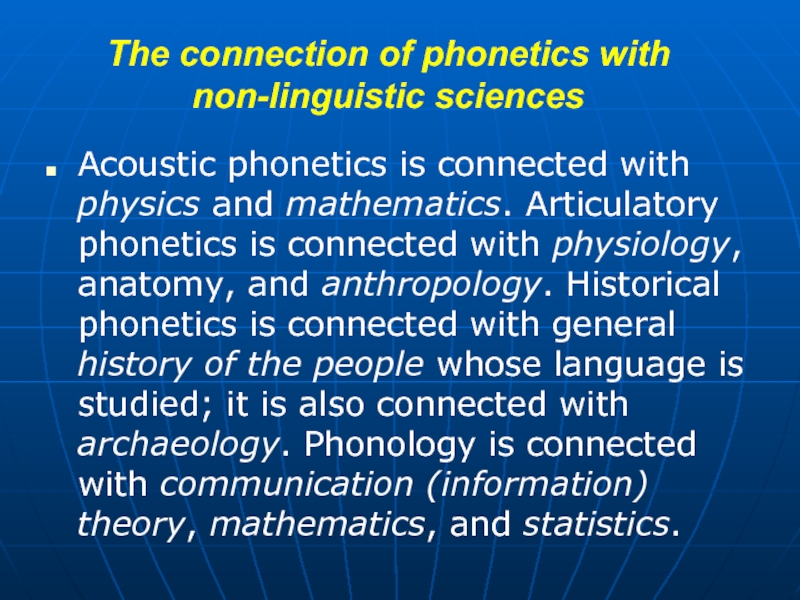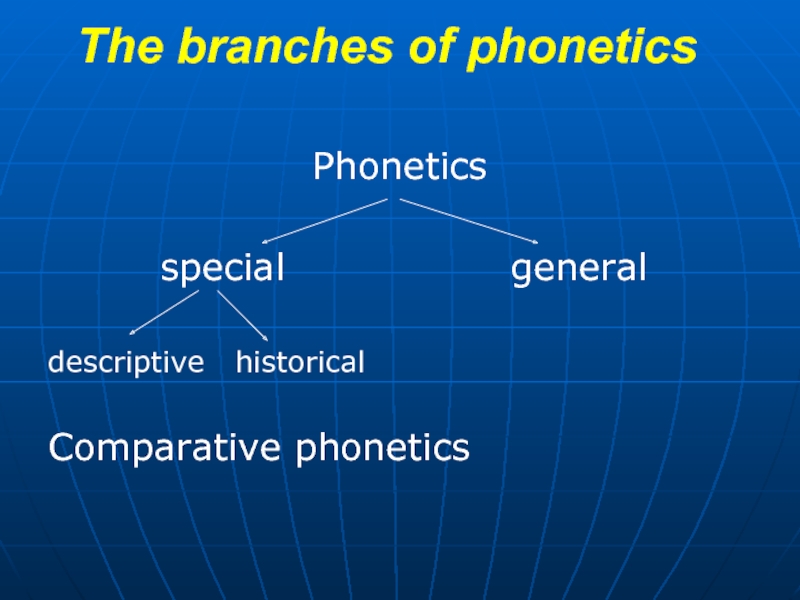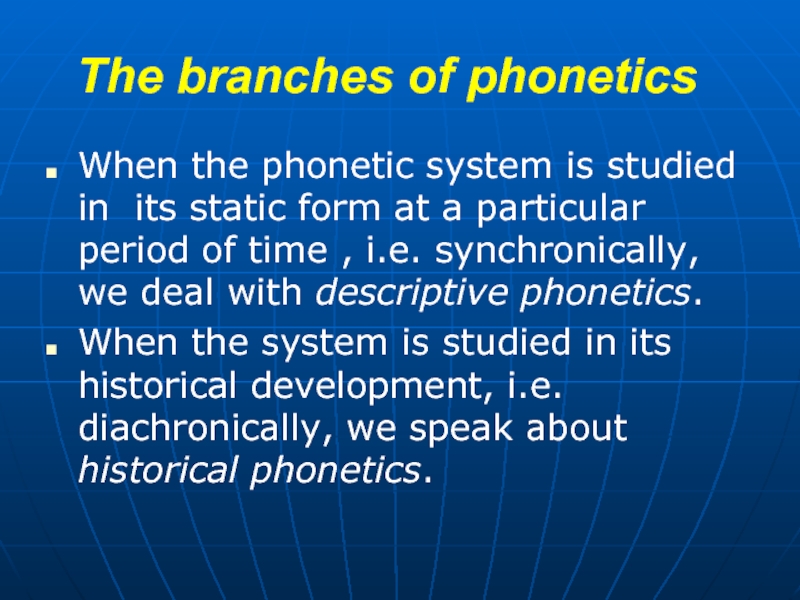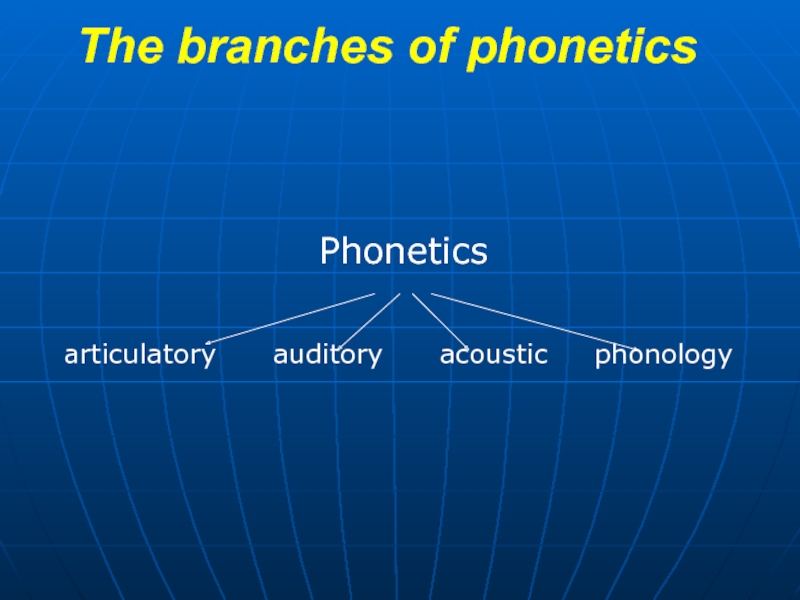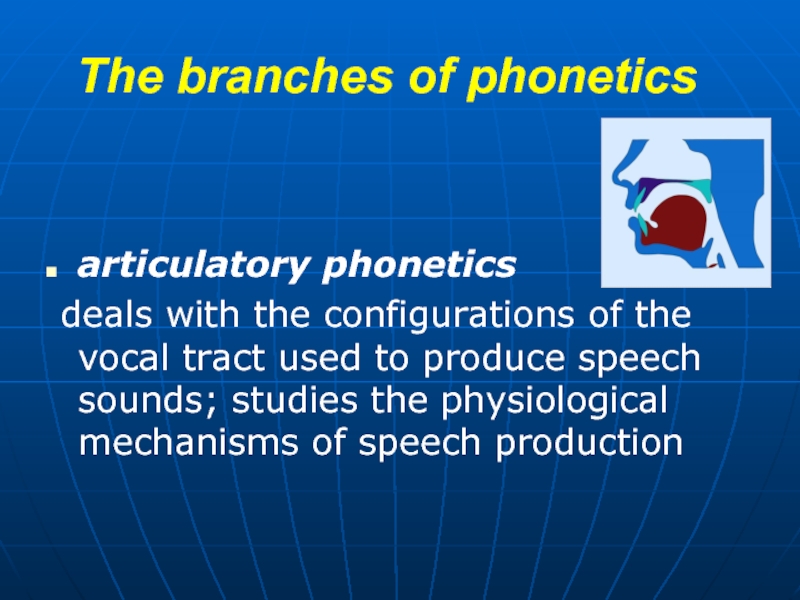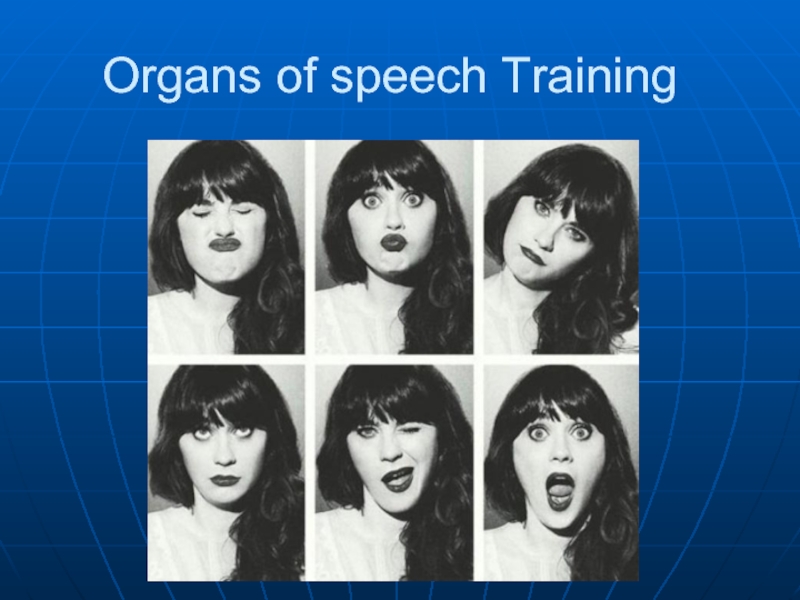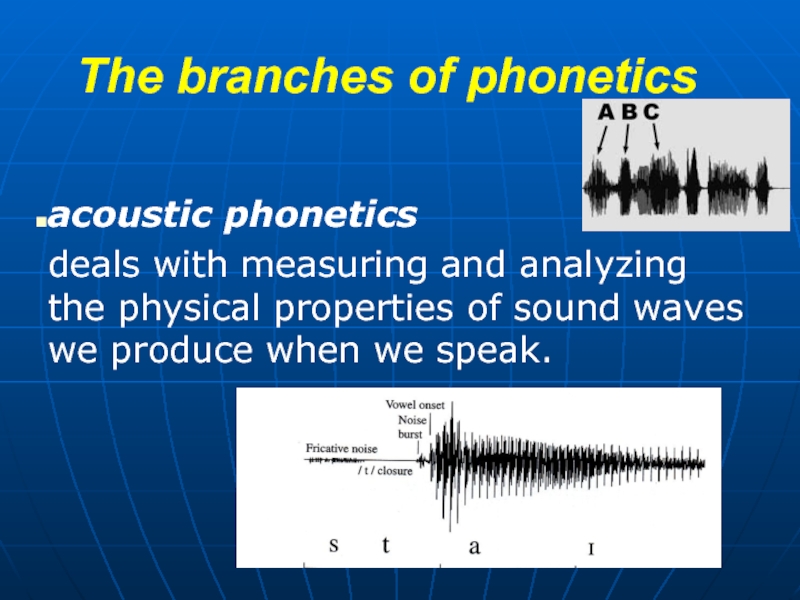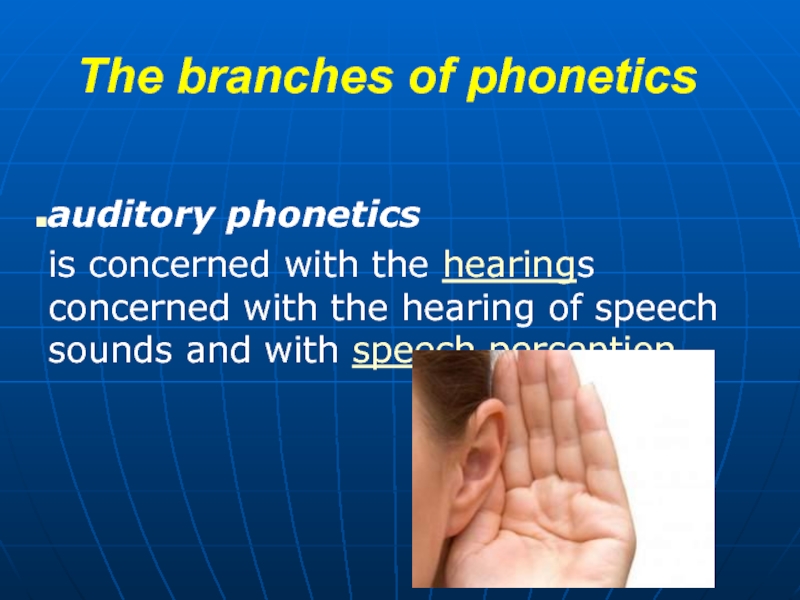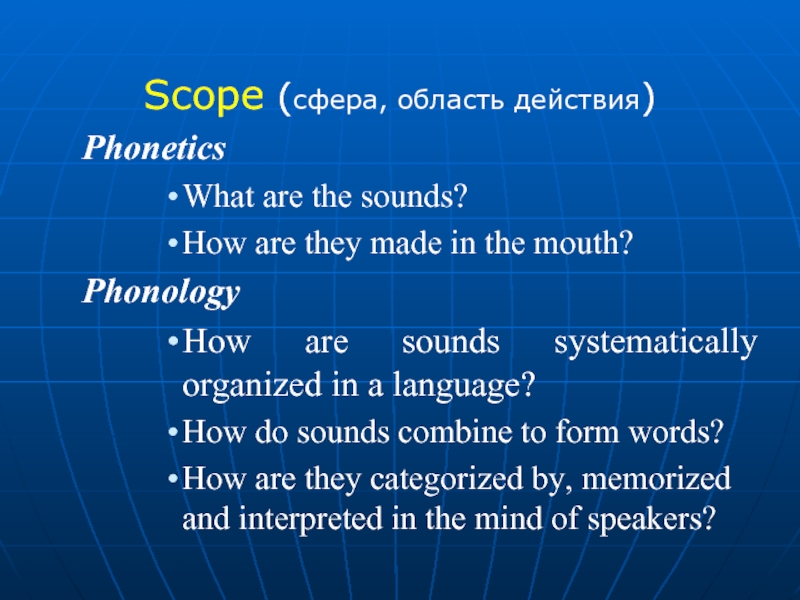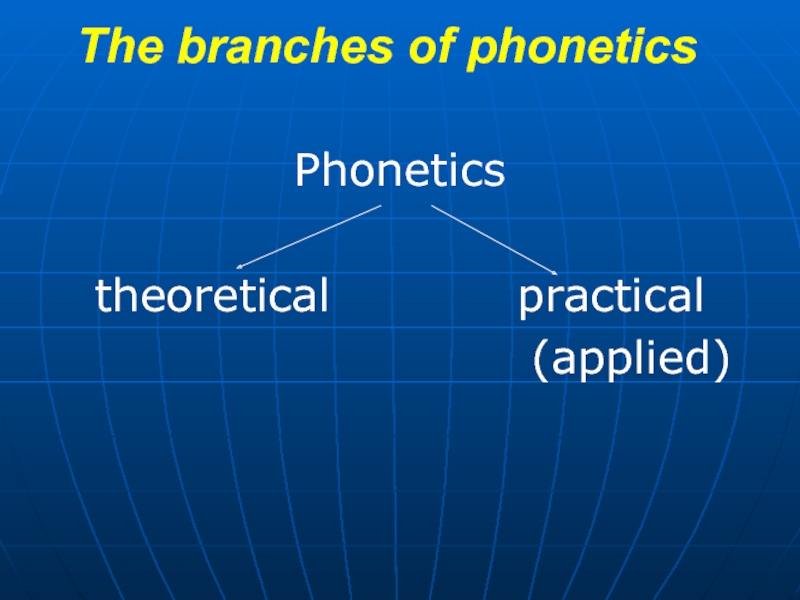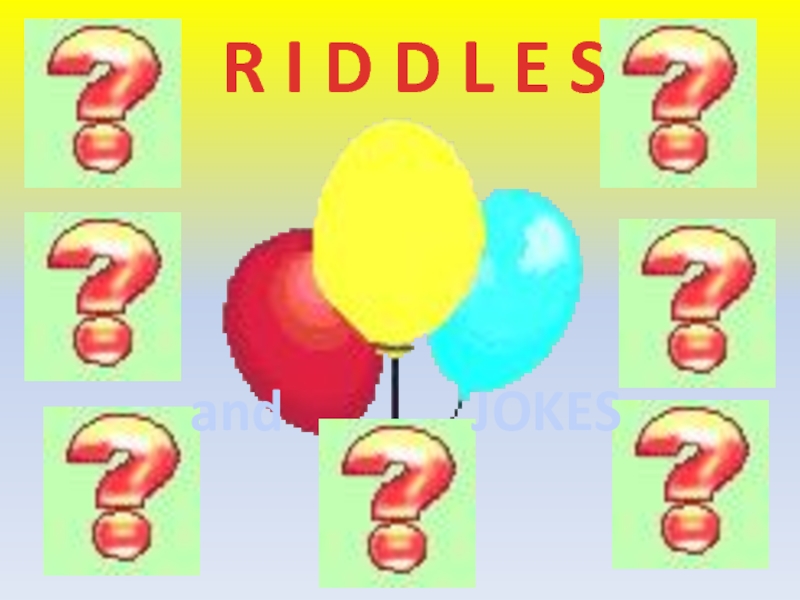- Главная
- Разное
- Дизайн
- Бизнес и предпринимательство
- Аналитика
- Образование
- Развлечения
- Красота и здоровье
- Финансы
- Государство
- Путешествия
- Спорт
- Недвижимость
- Армия
- Графика
- Культурология
- Еда и кулинария
- Лингвистика
- Английский язык
- Астрономия
- Алгебра
- Биология
- География
- Детские презентации
- Информатика
- История
- Литература
- Маркетинг
- Математика
- Медицина
- Менеджмент
- Музыка
- МХК
- Немецкий язык
- ОБЖ
- Обществознание
- Окружающий мир
- Педагогика
- Русский язык
- Технология
- Физика
- Философия
- Химия
- Шаблоны, картинки для презентаций
- Экология
- Экономика
- Юриспруденция
Theoretical Phonetics of the English Language презентация
Содержание
- 1. Theoretical Phonetics of the English Language
- 2. Phonetics as a Science The phonetic
- 3. The phonetic system of a language
- 4. The phonetic system of a language “To
- 5. The phonetic system of a language Phonetics
- 6. The connection of phonetics with other branches
- 7. The connection of phonetics with other branches
- 8. The connection of phonetics with other branches
- 9. The connection of phonetics with other branches
- 10. The connection of phonetics with other branches
- 11. The connection of phonetics with non-linguistic sciences Phonetics is closely connected with psychology.
- 12. The connection of phonetics with non-linguistic sciences
- 13. The branches of phonetics Phonetics
- 14. The branches of phonetics When the phonetic
- 15. The branches of phonetics Phonetics
- 16. The branches of phonetics articulatory
- 17. Organs of speech Training
- 18. The branches of phonetics acoustic phonetics
- 19. The branches of phonetics auditory phonetics
- 20. The branches of phonetics Functional phonetics
- 21. Scope (сфера, область действия) Phonetics
- 22. The branches of phonetics Phonetics
- 23. The branches of phonetics Theoretical phonetics
- 24. Theoretical Phonetics of the English Language Thank you for your attention !
Слайд 2Phonetics as a Science
The phonetic system of a language
The connection of
phonetics with other branches of linguistics
The branches of phonetics
The branches of phonetics
Слайд 3The phonetic system of a language
The phonetic system
segmental level
vocalic subsystem
consonantal subsystem
suprasegmental or prosodic level
(the patterns of stress and intonation in a language )
pitch
stress
rhythm
tempo
pauses
Слайд 4The phonetic system of a language
“To speak any language a person
must know nearly 100 % of its phonetics, while only 50-90% of its grammar and 1% of the vocabulary may be sufficient.”
Alfred Charles Gimson,
an Englishan English phonetician
Alfred Charles Gimson,
an Englishan English phonetician
Слайд 5The phonetic system of a language
Phonetics has a long history. It
was known to ancient Greeks and Hindus. But as a science it began to develop in the second half of the 19th century.
Phonetics is closely connected with lexicology, grammar and stylistics as (т.к.) the phonetic system of a language, its vocabulary and grammar constitute one indivisible whole.
Phonetics is closely connected with lexicology, grammar and stylistics as (т.к.) the phonetic system of a language, its vocabulary and grammar constitute one indivisible whole.
Слайд 6The connection of phonetics with other branches of linguistics
Grammar:
reading rules
/t/
-(e)d /d/
/id/
/s/
-(e)s /z/
/iz/
-(e)d /d/
/id/
/s/
-(e)s /z/
/iz/
Слайд 7The connection of phonetics with other branches of linguistics
Grammar:
reading rules
sound interchange
/f
– v/ leaf - leaves
/u: - i:/ goose - geese
/i – æ – Λ / begin – began - begun
/u: - i:/ goose - geese
/i – æ – Λ / begin – began - begun
Слайд 8The connection of phonetics with other branches of linguistics
Grammar:
reading rules
sound interchange
intonation
\ Mike came home.
Mike \ came home.
Mike came \ home.
Mike \ came home.
Mike came \ home.
Слайд 9The connection of phonetics with other branches of linguistics
Lexicology:
stress
‘present (n)
- pre‘sent (v)
'forecast (n) - fore'cast (v)
‘blackbird – ‘black ‘bird
correct pronunciation of homographs
bow /bou/ - bow /bau/
row /rou/ - row /rau/
wind /wind/ - wind /waind/
sewer /ˈsɜʊə/ - sewer /ˈsjuə/
'forecast (n) - fore'cast (v)
‘blackbird – ‘black ‘bird
correct pronunciation of homographs
bow /bou/ - bow /bau/
row /rou/ - row /rau/
wind /wind/ - wind /waind/
sewer /ˈsɜʊə/ - sewer /ˈsjuə/
Слайд 10The connection of phonetics with other branches of linguistics
Stylistics:
intonation and its
components
repetition of words, phrases and sounds
Alliteration – the repetition of identical or similar sounds:
There are twelve months in all the year,
As I hear many men say,
But the merriest month in all the year
Is the merry month of May.
repetition of words, phrases and sounds
Alliteration – the repetition of identical or similar sounds:
There are twelve months in all the year,
As I hear many men say,
But the merriest month in all the year
Is the merry month of May.
Слайд 11The connection of phonetics with non-linguistic sciences
Phonetics is closely connected with
psychology.
Слайд 12The connection of phonetics with non-linguistic sciences
Acoustic phonetics is connected with
physics and mathematics. Articulatory phonetics is connected with physiology, anatomy, and anthropology. Historical phonetics is connected with general history of the people whose language is studied; it is also connected with archaeology. Phonology is connected with communication (information) theory, mathematics, and statistics.
Слайд 13The branches of phonetics
Phonetics
special
general
descriptive historical
Comparative phonetics
descriptive historical
Comparative phonetics
Слайд 14The branches of phonetics
When the phonetic system is studied in its
static form at a particular period of time , i.e. synchronically, we deal with descriptive phonetics.
When the system is studied in its historical development, i.e. diachronically, we speak about historical phonetics.
When the system is studied in its historical development, i.e. diachronically, we speak about historical phonetics.
Слайд 16The branches of phonetics
articulatory phonetics
deals with the configurations of
the vocal tract used to produce speech sounds; studies the physiological mechanisms of speech production
Слайд 18The branches of phonetics
acoustic phonetics
deals with measuring and analyzing the
physical properties of sound waves we produce when we speak.
Слайд 19The branches of phonetics
auditory phonetics
is concerned with the hearings concerned
with the hearing of speech sounds and with speech perception.
Слайд 20The branches of phonetics
Functional phonetics or phonology
deals with
the functioning aspect of
phenomena. The aim of phonology is to discover those segmental and prosodic features that have a differential value in a language.
Слайд 21
Scope (сфера, область действия)
Phonetics
What are the sounds?
How are they
made in the mouth?
Phonology
How are sounds systematically organized in a language?
How do sounds combine to form words?
How are they categorized by, memorized and interpreted in the mind of speakers?
Phonology
How are sounds systematically organized in a language?
How do sounds combine to form words?
How are they categorized by, memorized and interpreted in the mind of speakers?
Слайд 23The branches of phonetics
Theoretical phonetics of a particular language applies the
theories formulated by general phonetics (the phoneme theory, the theory of syllable formation, theories of stress, intonation).
By practical (applied) phonetics we mean all the practical applications of phonetics (in teaching foreign languages, logopedics, telephony, etc.)
By practical (applied) phonetics we mean all the practical applications of phonetics (in teaching foreign languages, logopedics, telephony, etc.)

